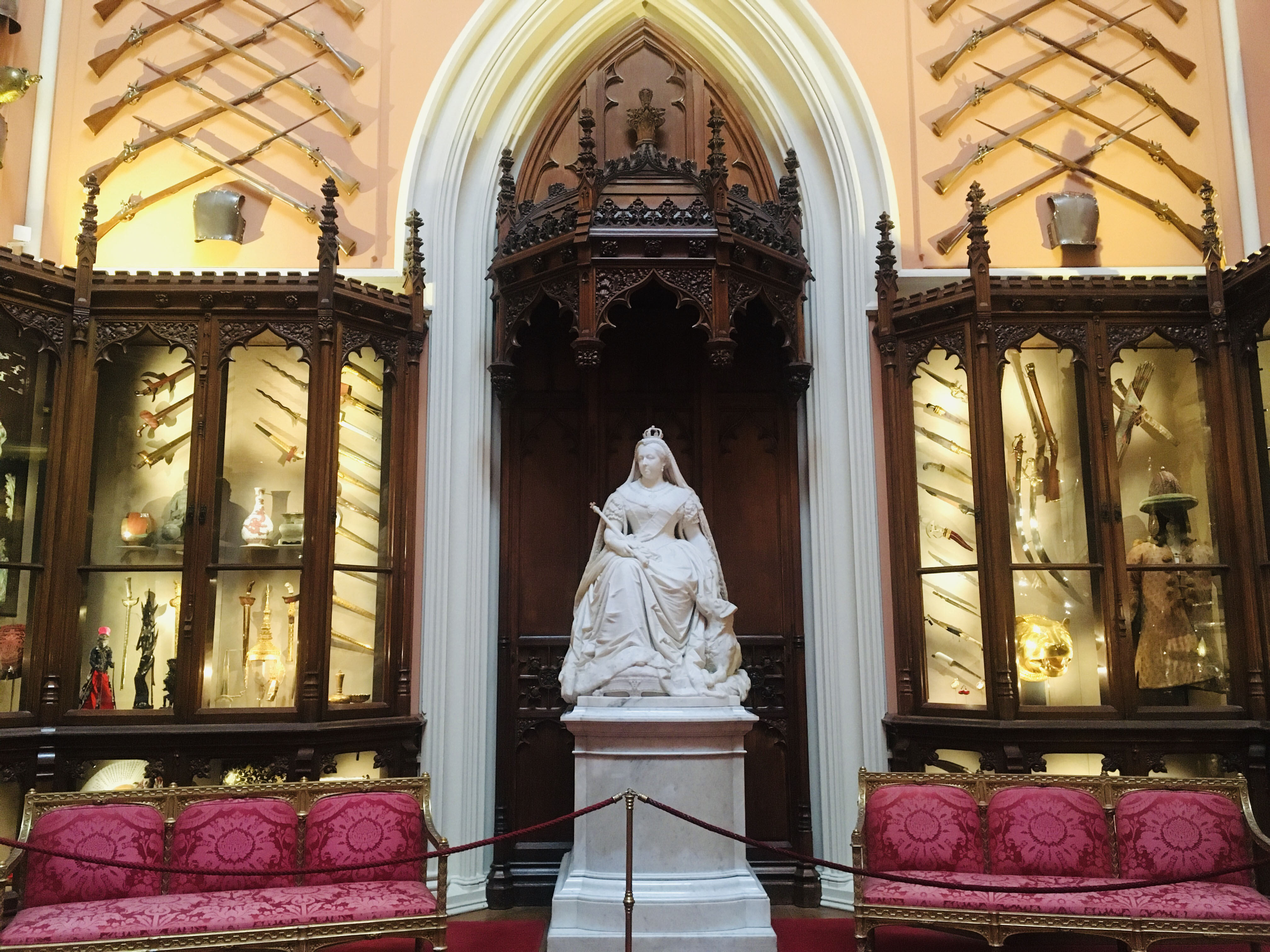
Grand Vestibule: The British Monarchy and the World
The Grand Vestibule at Windsor Castle reflects interaction between the monarchy and the wider world
HAWAIIAN
Cape ('ahu'ula)
1824RCIN 69992
Feather cape, semi-circular, with red, yellow and black bird feathers on a bark cloth backing; red ground with yellow edging, black and yellow triangles up each side of the front opening, yellow and black crescent moon at centre back. With a tie at the neck, whose distinctive rounded shape helps date the cape to the late eighteenth century or later.
Feather cloaks and capes of this kind, called 'ahu'ula, were among the most important symbols of status in Hawaii. Full cloaks were worn only by the highest-ranking chiefs on ceremonial occasions or during battle. Smaller capes were worn by those of lesser standing. Thousands of feathers were required to make a single cloak and the scarcity of vibrant yellow feathers in particular made the garments even more precious. Yellow feathers came from the 'ö'ö (Moho nobilis) and mamo (Drepanis pacifica) birds, which are mostly black and shed only a few yellow feathers in the moulting season. Considerable manpower was required to catch the birds and remove their yellow feathers, after which they would be released back into the wild. Contrasting red feathers served as a further symbol of chiefly greatness, the colour red being closely associated with divinity throughout Polynesia.
Feather cloaks and capes of this kind, called 'ahu'ula, were among the most important symbols of status in Hawaii. Full cloaks were worn only by the highest-ranking chiefs on ceremonial occasions or during battle. Smaller capes were worn by those of lesser standing. Thousands of feathers were required to make a single cloak and the scarcity of vibrant yellow feathers in particular made the garments even more precious. Yellow feathers came from the 'ö'ö (Moho nobilis) and mamo (Drepanis pacifica) birds, which are mostly black and shed only a few yellow feathers in the moulting season. Considerable manpower was required to catch the birds and remove their yellow feathers, after which they would be released back into the wild. Contrasting red feathers served as a further symbol of chiefly greatness, the colour red being closely associated with divinity throughout Polynesia.







